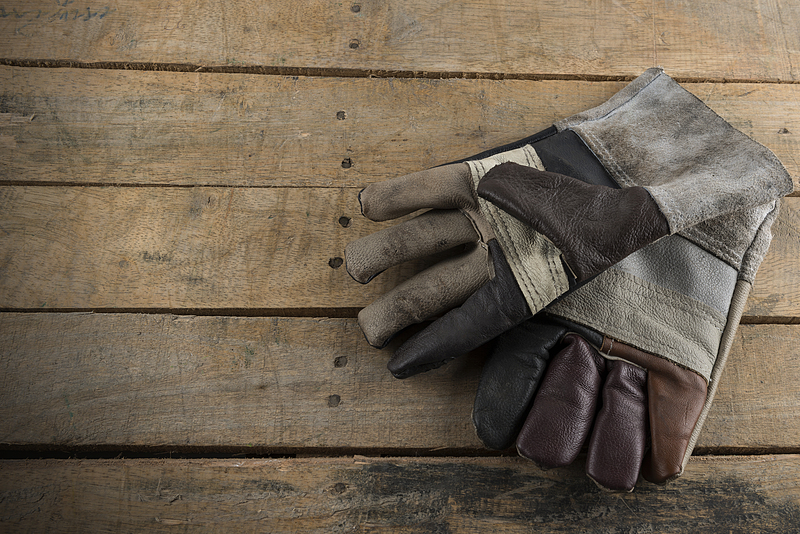Achieving Solo Heavy Lifting Success and Safety: The Ultimate Guide
Solo heavy lifting can be a challenging yet rewarding endeavor. Whether you're a construction worker, a warehouse manager, a homeowner, or a passionate DIYer, mastering the art of lifting heavy objects by yourself is crucial for safety and efficiency. Without the right techniques and precautions, solo heavy lifting can cause injury, property damage, and unnecessary frustration. This comprehensive guide delves into proven methods, tools, and safety tips to help you achieve solo heavy lifting success with confidence.
Table of Contents
- Understanding the Challenges of Lifting Heavy Objects Alone
- Preparation: Key to Solo Lifting Safety
- Proper Lifting Techniques for Solo Lifters
- Essential Tools and Equipment for Safe Heavy Lifting
- Advanced Strategies for Heavy Lifting Success
- Preventing Injuries While Lifting Alone
- Frequently Asked Questions about Solo Heavy Lifting
- Conclusion: Achieve Solo Heavy Lifting Success with Confidence
Understanding the Challenges of Lifting Heavy Objects Alone
Lifting heavy items by yourself comes with a unique set of challenges that differ from team lifting scenarios. Some of these challenges include:
- Increased risk of injury, especially to the back, shoulders, and knees
- Lack of support to stabilize or balance the load
- Limited control over unwieldy or awkward objects
- Difficulties with visibility and maneuverability
- Fatigue and overexertion, which can lead to loss of concentration
Solo heavy lifting is not just a test of strength but also a test of technique and preparation. It makes safety and efficiency vital for anyone trying to master the process.
Preparation: Key to Solo Lifting Safety
Preparation is half the battle when it comes to achieving solo heavy lifting success. Before attempting to move any large or weighty item, take the following preparatory steps:
1. Assess the Load
- Estimate the weight. Can you manage it alone, or should you enlist help or use mechanical aids?
- Check the shape and center of gravity. Irregularly shaped objects may need special handling.
- Look for sharp edges, loose parts, or anything that could snag during the move.
2. Map Out the Path
- Clear your route of obstacles, spills, or tripping hazards.
- Plan rest stops if, for example, you are moving up stairs or over a long distance.
- Ensure doorways, hallways, and corners are wide enough for the object.
3. Wear Appropriate Gear
- Non-slip footwear: Reduces the risk of slipping under load.
- Gloves: Adds grip and protects your hands from sharp edges.
- Back support or lifting belts (if needed): Helps maintain posture and reduce strain.
4. Warm Up Before You Lift
Just as athletes prepare before a big event, a proper warm-up helps ready muscles and joints, reducing the risk of injury:
- Stretch your legs, arms, back, and shoulders.
- Do a few light squats to engage your lower body.
- Practice your lifting stance without a load first.
Proper Lifting Techniques for Solo Lifters
The foundation of solo heavy lifting safety is adopting tried and tested biomechanical techniques. These steps minimize strain and maximize leverage:
1. The Basic Safe Lifting Technique
- Stand close to the object with your feet shoulder-width apart.
- Bend at your knees, not your waist, keeping your back straight and chest up.
- Grip the object firmly with both hands.
- Lift slowly by extending your legs, keeping the object as close to your body as possible.
- Hold your core engaged and avoid twisting movements.
- Keep your head up and eyes forward throughout the lift.
2. Advanced Lifting Tips for Heavy Loads
- Break the load down: If possible, divide items into smaller, lighter components.
- Use leverage: Tilt or slide objects whenever possible instead of picking them up outright.
- Push, don't pull: When moving heavy items across flat surfaces, pushing offers greater control and requires less force than pulling.
3. Lifting Objects from High or Low Positions
- When lowering: Maintain a straight back, bend knees, and descend slowly.
- From shelves or vehicles: Support the load before moving it away from its resting place, and bring it close to your torso as soon as possible.
Remember: Lifting too much by yourself can result in strains, sprains, and even severe injuries. If the load is too heavy or awkward, always use aids or seek help.
Essential Tools and Equipment for Safe Heavy Lifting
With the right equipment and assistive devices, lifting even the heaviest objects becomes safer and more manageable. Consider the following tools to maximize your solo heavy lifting success:
1. Dollies and Hand Trucks
- Utility dolly: Ideal for moving boxes, appliances, and other bulky items.
- Appliance dolly: Designed for heavier objects like refrigerators, often comes with stair climber wheels and straps.
2. Furniture Sliders and Gliders
- Place under corners of heavy furniture for smooth gliding across floors, minimizing both effort and damage.
3. Lifting Straps and Harnesses
- Forearm and shoulder harnesses: Distribute the load across larger muscles, reducing risk to your back and arms.
4. Pry Bars and Leverage Tools
- Use to lift one side of an object enough to slide sliders or straps underneath.
5. Ramps
- Perfect for loading/unloading from vehicles or raised surfaces with less lifting required.
Investing in these tools means you can move objects more efficiently, saving time and reducing the strain on your body.
Advanced Strategies for Heavy Lifting Success
1. Leverage and Mechanical Advantage
Using leverage is a centuries-old principle for moving heavy items. Levers, pulleys, and inclined planes can all multiply your strength, allowing you to move objects that would otherwise be impossible to lift alone.
2. The Art of Sliding and Rolling
- If possible, slide or roll the load across a smooth surface using sliders, pipes, or even a sturdy rug.
- Roll large cylindrical items instead of lifting them outright.
3. Load Securing Techniques
- Secure objects to dollies or carts using bungee cords or heavy-duty straps to prevent shifting during transport.
4. Use Gravity to Your Advantage
- Whenever possible, move objects downhill instead of lifting upward slopes.
5. Take Strategic Breaks
- Don't try to do everything in one go -- fatigue is the enemy of safe lifting.
- Plan stops for rest and hydration if moving over long distances.
Preventing Injuries While Lifting Alone
Safety must always take priority. Even seasoned professionals experience injuries when solo heavy lifting techniques are neglected. Here are crucial ways to protect yourself:
- Know your limits. Never attempt to lift objects beyond your physical capacity.
- Listen to your body. If you feel pain or excessive strain, stop immediately.
- Avoid sudden movements or jerks when lifting or lowering objects.
- Keep pathways clear for quick and unobstructed movement.
- Stay hydrated and avoid lifting when tired or unfocused.
- Warm up before and stretch after lifting to reduce muscle tension and stiffness.
It's critical to remember: No task is worth risking a lifelong injury. If an object is too difficult or hazardous, call for assistance.
Frequently Asked Questions about Solo Heavy Lifting
What is the maximum safe weight to lift alone?
This depends on your physical fitness, experience, and the object's size/shape. As a general guideline, safety organizations recommend not exceeding 50 lbs (23 kg) for one person. When in doubt, err on the side of caution.
Can I use home-made tools for solo lifting?
DIY aids (such as old rugs for sliding) can help in non-professional settings. However, safety-certified equipment is always preferred for regular or heavy-duty lifting tasks.
Is a lifting belt necessary?
Lifting belts support proper form but aren't a replacement for good technique. Use belts for very heavy or repetitive tasks, and never depend solely on them for injury prevention.
How do I safely move heavy objects upstairs or downstairs alone?
- Use a stair-climbing dolly or sliders specifically designed for stairs.
- Keep the load close, maintain three points of contact, and move slowly and deliberately.
- If stairs are steep or the load is unwieldy, it's best to enlist help.
What should I do if I get injured while solo lifting?
- Stop all activity immediately and assess your condition.
- Seek medical attention if pain is severe, you cannot move, or you suspect a sprain, strain, or fracture.
- Rest, apply ice to the affected area, and avoid further lifting until healed.
Conclusion: Achieve Solo Heavy Lifting Success with Confidence
Mastering the art of solo heavy lifting is about understanding your body, using proper equipment, applying proven techniques, and prioritizing safety at all times. By following the guidelines outlined in this article, you can handle demanding lifting tasks with greater confidence, efficiency, and minimal risk. Remember: Success in heavy lifting solo is not about brute strength but about strategy, preparation, and smart execution.
- Assess every lift before you begin.
- Plan and clear your path thoroughly.
- Use reliable equipment whenever possible.
- Warm up and use proper form to avoid injury.
- Know your limits and listen to your body.
With the right mindset and approach, solo heavy lifting can be both safe and successful--empowering you to accomplish more, every day.





